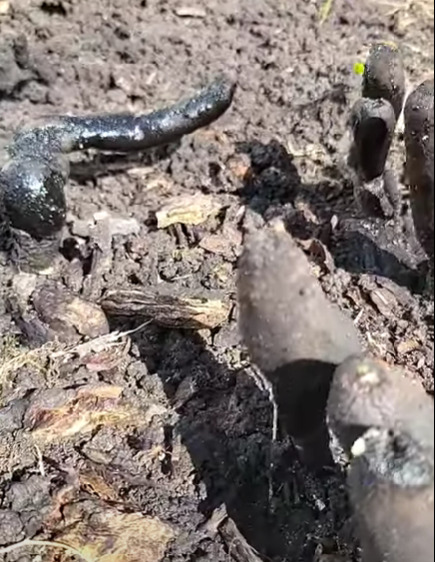Exploring Dead Man’s Fingers: Nature’s Mysterious Fungi!
What Is Dead Man’s Fingers?

Scroll down to see a video of Dead Man’s Finger Fungus, or continue reading till you get there 🙂 The Dead Man’s Finger fugus is very interesting. Hope you enjoy!
In the world of mycology, the study of fungi, there are countless intriguing species to discover and unravel. Among these, “Dead Man’s Fingers” stands out as one of the most captivating and enigmatic fungi. With its grotesque appearance and eerie name, Dead Man’s Fingers has piqued the curiosity of nature enthusiasts and scientists alike. In this article, we will explore what Dead Man’s Fingers are, their unique characteristics, habitat, and their role in the ecosystem.
What Are Dead Man’s Fingers?
Dead Man’s Fingers, scientifically known as Xylaria polymorpha, is a species of fungi belonging to the family Xylariaceae. It is commonly referred to as the “Dead Man’s Fingers” due to its resemblance to gnarled, blackened fingers emerging from the forest floor. These elongated, finger-like structures can vary in size but typically measure between 5 to 20 centimeters in length. Despite their sinister appearance, Dead Man’s Fingers are entirely harmless to humans and animals.
What Does Dead Man’s Fingers Look Like?

Unique Characteristics
- Texture and Color: Dead Man’s Fingers are characterized by their dark, almost black, finger-like structures. These fingers are hard, often wrinkled, and can sometimes appear slightly shiny, giving them an otherworldly appearance.
- Growth Pattern: These fungi tend to grow in clusters or groups, emerging from decaying wood or soil. They often resemble a macabre version of skeletal hands reaching out from the ground.
- Lifecycle: Like many fungi, Dead Man’s Fingers go through different stages of development. Initially, they appear as white, finger-like structures that later turn black as they mature.
- Spore Dispersal: Dead Man’s Fingers use a unique method for spore dispersal. The ends of their fingers become perforated, and when raindrops strike them, it creates a splashing effect, helping to disperse the spores over a wider area.
Habitat
Dead Man’s Fingers are saprophytic fungi, meaning they feed on dead organic matter, particularly decaying wood. They can be found in various forested habitats, including woodlands, heaths, and even in urban parks. These fungi play a crucial role in the decomposition of dead plant material, aiding in the recycling of nutrients within the ecosystem.
Ecological Importance
- Decomposers: Dead Man’s Fingers, like many other fungi, are essential decomposers. They break down complex organic compounds in dead wood, returning nutrients to the soil, which can then be utilized by other plants and organisms.
- Indicator Species: The presence of Dead Man’s Fingers can sometimes indicate the health of an ecosystem. Their ability to thrive in certain conditions and their sensitivity to environmental changes make them valuable indicators of ecosystem stability.
- Mycorrhizal Relationships: Some species of Xylaria, including Dead Man’s Fingers, form mycorrhizal relationships with plants. In these symbiotic partnerships, fungi exchange nutrients and water with the host plant, benefiting both parties.
Conclusion
Dead Man’s Fingers may have a sinister appearance and a mysterious name, but they are an integral part of our ecosystems, contributing to the balance of nature through their role as decomposers and indicators of ecosystem health.
Their unique growth patterns and methods of spore dispersal make them fascinating subjects for study by mycologists and nature enthusiasts alike. So, the next time you stumble upon these eerie fungi in the woods, remember that Dead Man’s Fingers are not to be feared but celebrated for their vital role in the cycle of life.
Enjoy the outdoors? Looking for a new hobby? Check out the awesome world of RC!
Get started with our favorite RC Crawler
